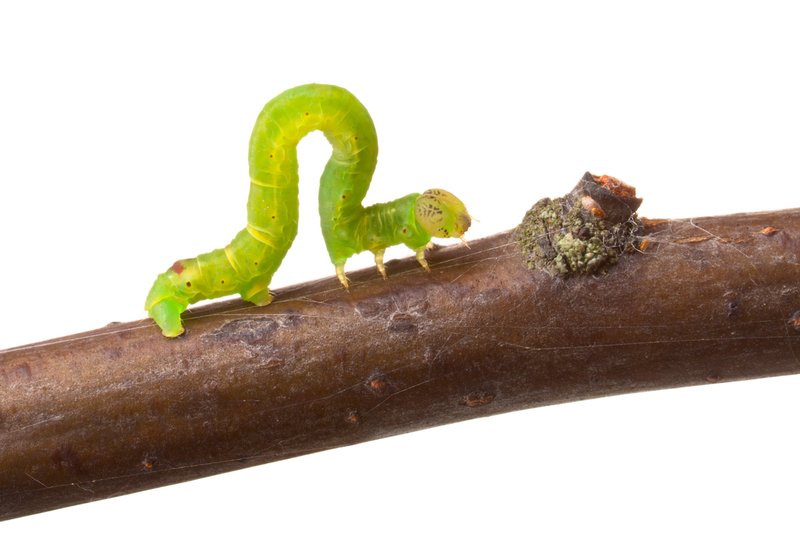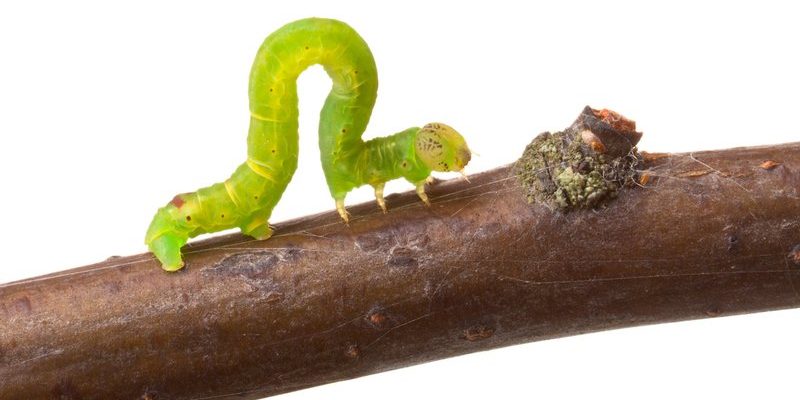
So, what exactly is an inchworm? Imagine a tiny green or brown caterpillar that wriggles its way along branches and leaves, munching as it goes. These creatures are the larvae of moths, often seen hanging from branches or camouflaged among leaves. Even though they might be small, their appetite can pack a punch, leading to discoloration and leaf loss. Let’s dive into how you can determine if your tree is suffering from inchworm damage and what steps you can take to protect it.
Recognizing Inchworms and Their Damage
When you first look at your tree, you might not immediately notice an inchworm. These critters have a knack for blending in with their surroundings, but a keen eye can help reveal their presence. Typically, they measure about 1 to 2 inches long and can be green, brown, or even black, depending on the species. If you see these tiny caterpillars inching their way along branches, that’s your first sign that something isn’t quite right.
The damage they cause usually presents itself as *irregular holes in leaves* or *entire leaves stripped off*. You might even discover *frass*, which is just a fancy word for the droppings they leave behind, looking like little dark specks. If your tree looks bare, or if you see these signs, it’s time to dig a little deeper and understand what’s going on.
Common Signs of Inchworm Damage
Aside from the visible presence of inchworms, there are other key indicators of damage you can watch for. One of the most noticeable signs is *leaf curling*. When inchworms munch on leaves, they often cause them to curl up and become distorted. If you spot this on your tree, it’s a good idea to investigate further.
Another key sign is *defoliation*, where entire sections of leaves appear to be missing. This can happen quite quickly, especially if you have a substantial population of inchworms. If you see your tree losing leaves faster than usual, take a closer look. You might even notice the branches looking more bare than full, which is not the look you want for a healthy tree.
Sometimes, you might spot *webbing* or silk threads on the branches. Inchworms may create these to protect themselves or to help them move from branch to branch. If you see any of these signs, know that your tree is likely dealing with a more significant issue.
Inspecting Your Tree for Inchworms
Now that you know what to look for, inspecting your tree is next. Start at the base and work your way up, keeping an eye out for any signs of inchworms or their damage. Pay special attention to the underside of leaves, as inchworms often hide there.
Using a simple tool like a **hand lens** can help you spot these tiny pests. Also, shake or tap the branches gently. If inchworms are present, some might drop down or fall off. This is not only a good way to confirm their presence but also an opportunity to capture them and remove them if necessary.
It’s also wise to check the tree regularly, especially during the spring and summer months when inchworms are most active. These small inspections can save your tree from major damage.
Identifying Different Types of Inchworms
Inchworms come in various types, and knowing which one you’re dealing with can help in treating them. Some common varieties include the *Eastern Tent Caterpillar*, *Gypsy Moth*, and *Fall Webworm*. Each type has its distinct characteristics and behavior.
The **Eastern Tent Caterpillar**, for example, creates silk tents in the forks of branches and is usually more noticeable due to its webbing. On the other hand, *Gypsy Moths* can cause severe defoliation and are known for their large populations. Their presence often leads to *sudden leaf loss* in early summer.
Identifying these differences helps you choose the right method to manage them effectively, whether it’s manual removal or seeking help from pest control services.
How to Treat Inchworm Damage
Dealing with inchworm damage doesn’t have to be overwhelming. If you spot these pests early, you can often manage the situation effectively. For small infestations, manual removal is an option. Simply handpick the inchworms off your tree and dispose of them.
If the infestation is larger, consider using insecticidal soap or horticultural oil. These are less harsh on beneficial insects and can effectively target inchworms. Just be sure to follow the directions on the label and spray during the evening when beneficial bugs are less active.
Additionally, keeping your tree healthy can help it recover from any damage. Regular watering, mulching, and fertilizing will give your tree the strength it needs to bounce back. Think of it as a little extra TLC for your tall friend.
Preventing Future Inchworm Infestations
Prevention is often easier than treatment. To keep inchworms at bay, consider some proactive measures. Start by maintaining good tree health through proper watering and fertilization. A healthy tree is more resilient and can better withstand pests.
You might also want to attract beneficial insects to your garden. Ladybugs and parasitic wasps are natural predators of inchworms, and bringing them into your yard can help control their population. Planting a diverse range of flowers can encourage these helpful insects to stick around.
Lastly, regular inspections will help you catch any developing problems early on. Think of it as a little “check-up” for your tree to make sure everything’s looking good.
When to Seek Professional Help
There are times when you might need to call in the pros. If you notice extensive damage or if your tree seems to be struggling despite your efforts, it might be time to consult an arborist. They can assess the situation more thoroughly and offer tailored solutions.
Sometimes, trees can get stressed out and develop other issues due to inchworm damage, leading to diseases or other pests moving in. An expert can help manage those issues and keep your tree looking healthy and vibrant.
In conclusion, discovering inchworm damage can feel daunting at first. Still, with a little knowledge and vigilance, you can protect your trees and ensure they continue to thrive. Remember to keep an eye out for the signs, act quickly, and don’t hesitate to seek help when needed. Your leafy friends will thank you!

